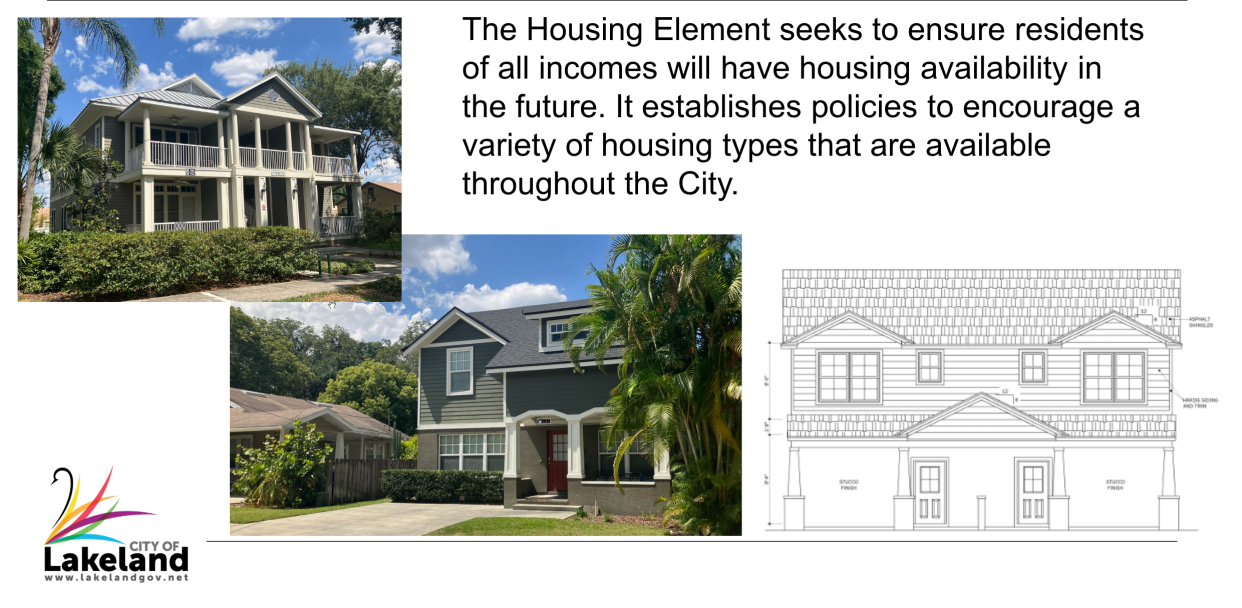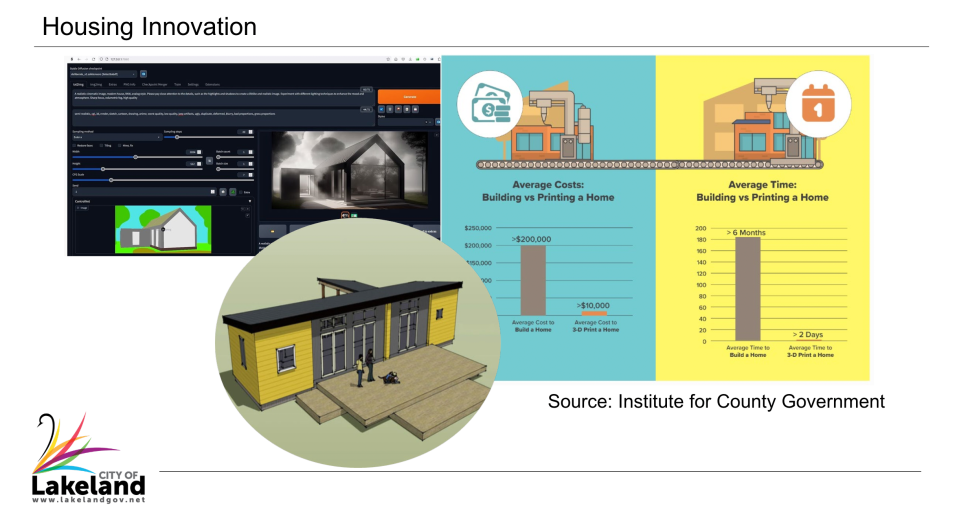What is Lakeland's 'missing middle'? City looks at housing options that are more affordable

More than 450 income-restricted affordable housing units have been built in Lakeland in the past five years. Yet city residents still face a housing crunch.
Teresa Maio, Lakeland's assistant director of community development, told commissioners during their strategic planning session on Monday that they need to start thinking differently, looking at both old and new solutions to making housing affordable.
"When we talk about affordable housing, I think a lot of time the focus is just on the creation of units and housing availability," Maio said. "Really, affordable housing is a balance between wages, income and also housing costs."
Right now, Chuck Barmby, the city's planning and transportation manager, said the city is in the process of reviewing and issuing permits for 1,211 single-family homes and more than 2,500 multi-family units slated for Southwest Lakeland.
"We have a great deal of larger, multi-family developments being built and obviously a lot of single-family [homes] being built," Maio said. "How do we provide for this type of housing stock that isn't currently widely available within the city?" Maio called this Lakeland's "missing middle." This "missing middle" covers a vast range of housing types that typically fall between single-family homes and apartment complexes, Maio said, including modular or manufactured homes, duplexes, triplexes or quads — yes, four units in a building that has an outward appearance similar to a single-family home.
"What we'd like to get to in terms of talking about housing affordability is getting to the conversation of housing availability, so we are looking not only at income-restricted units but a variety of units, a mix of unit types, and income levels to reside in those units."
Is Lakeland as expensive as Orlando, Tampa?
Affordable housing has become almost an overused catch phrase to describe everything from federally subsidized housing units that are income-restricted with capped rents, to discussing what types of homes can be afforded by different income workers.
Maio said no more than 30% of a household's overall income should go toward its mortgage or rent, insurance and utilities in order to be considered affordable. Transportation costs — car payments, insurance, gas, public transit ― are often the second highest expense of family, Maio said. The total amount a household spends on its housing and transportation should be no more than 45% of its total income to be considered affordable.
The median household income in Lakeland was estimated to be $58,290 in 2022, according to U.S. Census Bureau data.
In Lakeland, the average household is spending 53% of its income on housing and transportation. That ties with Tampa, at 53%, and worse than Orlando, at 49%.
"What we really need to start looking at is quicker and cheaper ways of developing housing," Maio said.
Innovation, density is needed
Lakeland's population has grown faster than anticipated, as it currently has 121,968 residents within city limits ― already well above an earlier projection of 119,356 residents by 2025.
"We have already exceeded the number of vacant properties within the City of Lakeland that were available for housing," Maio told commissioners. "Now we have to look at new units."

There is one key issue: There's only so much available space. Maio estimated there are about 3,000 acres designated for future residential use within the city. If that was built out to the highest density allowed, that's about 32,000 housing units.
Lakeland will have to look to innovative building solutions that incorporate density in those neighborhoods closest to the core downtown area, Maio said, with less density toward the edges of the city limits.
She suggested one solution might be encouraging the use of more modular or manufactured homes placed on concrete pads. These cost 46% less than the average house built on vacant land, Maio said.
"A lot of times when you hear the term manufactured homes or modular homes, there's a preconceived idea that comes with that," she said. "People automatically think mobile homes."
There have been modern innovations that have changed modular homes. Maio said she thinks city commissioners should consider incentivizing these types of construction and make it more acceptable within certain Lakeland neighborhoods.
Commissioner Stephanie Madden compared today's modular homes to the Craftsman-style homes that were once ordered from Sears, Roebuck and Co. catalogs, often as starter homes for families from 1908 to about 1940. A number were built in Polk County.
"It seems like an affordable option like some of those Craftsman in a box and mobile home communities, but is it getting any traction with the market?" she asked.
Madden questioned whether modular homes, or even tiny homes, are more of a current trend that has been popularized on TV but are limited for practical use.
"That is certainly a trend in some areas, and I think it would have applicability here in Lakeland," she said. "Historic districts, that would be difficult."
Maio said she thinks the city's goal should be to attract builders and developers to become more comfortable with putting multiple units in a singular building. The city's community development staff shared ideas for duplexes, a triplex and even quads.
"Our historic neighborhoods have the potential and would be the best areas to place those multi-unit developments, triplexes or quads to get higher density and some infill density within neighborhoods immediately adjacent to downtown," Maio said.
Other options to consider, Maio said, would be 3D printed homes, which are no longer out of the realm of possibility.
Commissioner Mike Musick said he has some concern about the number of vehicles one could expect to be parked outside these shared multi-unit homes. Maio said the goal is placing these closer to downtown, where one hopes greater availability of different transportation could be provided.
Barmby, in a presentation on transportation, stressed that simply widening all of Lakeland's roads and increasing parking is not the answer. Rather, he strongly suggested the city needs to consider making changes to encourage more neighborhood retail — or corner stores — particularly in Southwest Lakeland.
Sara-Megan Walsh can be reached at swalsh@theledger.com or 863-802-7545. Follow on X @SaraWalshFl.
This article originally appeared on The Ledger: Lakeland looks at housing options that are more affordable

